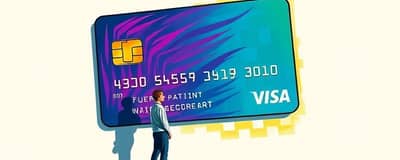Credit cards often carry a stigma: they are seen as debt traps rather than assets. Yet, with intentional habits and strategic planning, that same piece of plastic can become a cornerstone of your financial well-being. This guide will show you how to transform your credit card into a dynamic tool for budgeting, rewards, credit-building, and emergency support.
Embracing a new perspective is the first step. Instead of fearing interest or overspending, view your card as a means to track and categorize every expense and support your long-term goals.
Understanding Credit Cards Beyond Borrowing
Most consumers default to thinking of credit cards purely as a borrowing mechanism—and miss out on their hidden potential. By redefining your relationship with credit, you unlock benefits that extend far beyond short-term loans.
Reframe the card as a way to reframe your mindset around money. When you treat every purchase as an opportunity to gather data—whether it’s a cup of coffee or a major appliance—you gain clarity on your spending habits.
Using Credit Cards for Budgeting and Tracking Spending
One of the most powerful features of credit cards is the ability to generate detailed monthly statements. These statements let you see exactly where each dollar goes, making budgeting less guesswork and more science.
Charge all routine expenses—utilities, groceries, subscriptions—to your card. Then, pay off the balance in full every month. This habit helps you maintain control, avoid surprises, and identify areas for potential savings.
By adopting this approach, you are essentially turning every swipe into a data point. Over time, patterns emerge, highlighting categories where you might reduce spending or reallocate funds toward your priorities.
Building and Maintaining Strong Credit
Your credit score is a powerful determinant of your financial opportunities, impacting loan approvals, interest rates, and even rental applications. Two key factors account for 65% of your FICO score: payment history (35%) and credit utilization (30%).
Keep your balances below 30% of your total credit limit—such as maintaining a balance under $3,000 if you have a $10,000 limit. This simple guideline can make a dramatic difference in your credit health.
Practice these habits to sustain growth in your credit profile:
- Pay your balance in full and on time each month.
- Set up automatic payments or calendar reminders to avoid late fees.
- Avoid closing old accounts to preserve a long credit history.
Through consistent, responsible actions, your score will climb, unlocking better rates and larger credit lines when you need them most.
Maximizing Rewards and Strategic Redemption
Rewards programs can turn everyday spending into tangible benefits—cash back, travel miles, or points. Selecting the right structure depends on your lifestyle and priorities.
Review your spending categories—groceries, dining, travel, or gas—and match them to a card that pays out the highest rate. Many cards offer rotating bonuses, up to 5%, in specific categories each quarter.
Here’s a sample breakdown of common rewards structures:
Avoid letting points languish. Redeem strategically by using miles for airfare—often more valuable than cash back conversions—or apply cash rewards directly toward debt or savings goals.
By redeem rewards strategically you ensure that every point and dollar works in service of your priorities.
Special Offers, Balance Transfers, and Emergencies
Introductory 0% APR offers on purchases or balance transfers can be a lifeline when used correctly. They provide a window to pay down high-interest debt or finance a significant purchase without incurring interest.
To benefit fully, calculate how much you need to pay each month to clear the balance before the introductory period ends. Missing that deadline can result in retroactive interest charges.
Credit cards can also serve as an emergency backup for unexpected expenses. When a sudden repair or medical bill arises, a card with a high limit and low APR can prevent you from draining your savings—provided you have a plan for repayment.
Pitfalls to Avoid and Smart Practices
Despite the advantages, credit cards carry risks when misused. Common mistakes include carrying balances, overspending to chase rewards, and ignoring statements until problems arise.
Implement these safeguards to protect yourself:
- Only charge what you can pay off immediately.
- Review statements monthly to catch fraudulent charges early.
- Avoid opening multiple cards within a short time frame.
Adhering to these rules can shield you from costly interest charges and help you maintain a rock-solid credit profile.
Conclusion: Transforming Plastic into Power
Your credit card can be so much more than a fleeting convenience. With disciplined habits and an eye for opportunities, it becomes a versatile tool to track spending, maximize your spending power, earn valuable rewards, and build a strong credit foundation.
Begin today by reviewing your current card’s benefits, setting up automatic payments, and mapping your preferred reward categories. In doing so, you’ll harness the full potential of credit—turning plastic into a powerful ally on your journey to financial freedom.














